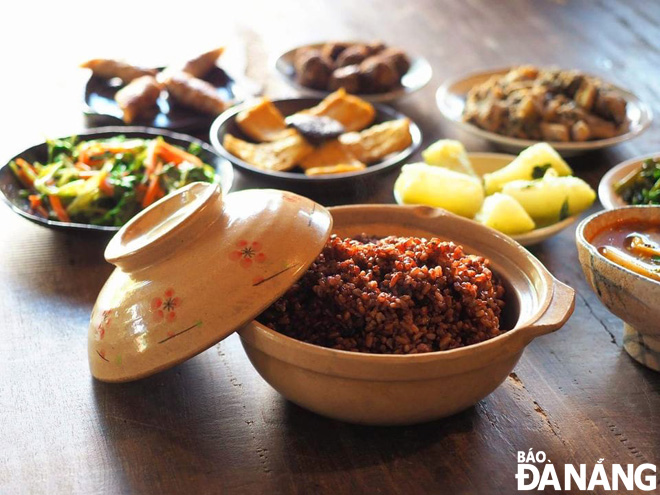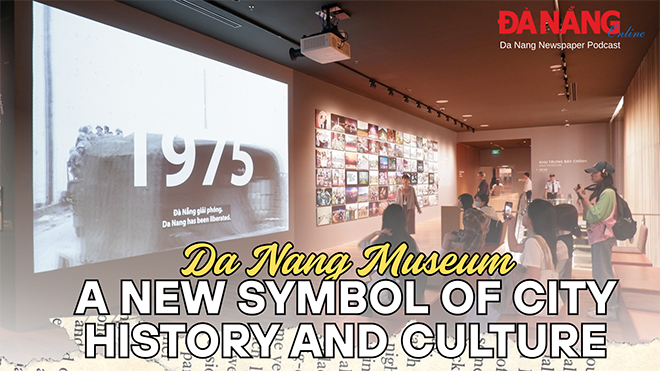Colours of vegetarian cuisine in Da Nang
Usually, when it comes to vegetarianism, people often think of religious followers, especially Buddhism. This is true, but perhaps it is not enough. In addition to the religious factor, vegetarianism is now becoming a worldwide trend with many positive beliefs such as vegetarianism being good for health, protecting living environment, along with cost-saving advantages.
 |
| Brown rice is a healthy and nutritious dish for vegetarians. Photo: H.L |
According to aggregate data from a report released by the Da Nang cultural sector, at present, the city houses 103 places of worship with thousands of believers and dignitaries. With such a number of followers, it can be said that the colour of vegetarian cuisine, from a religious perspective, can be seen quite a lot in the city’s cultural space.
Specifically, the whole city is, for the time being, home to about 302 vegetarian restaurants which can be divided into 3 levels: low-cost vegetarian eateries, budget-friendly vegetarian restaurants with no large space and high-class ones with an airy and eye-catching ecological space.
With the industrious and hard-working nature of the Central Viet Nam people as a whole, the way to prepare vegetarian dishes at budget-friendly vegetarian restaurants or high-class ones is always given a special heed from ingredients to textures.
The main food items much preferred by almost vegetarians in Da Nang are tofu, soy sauce and ‘chao’. Tofu is a vegetable protein made from soybeans after soaking, crushing and cooking. From liquid soy milk will thicken to become tofu. Tofu is low in carbs and contains no dairy, gluten or cholesterol. This type of food is used as a meat substitute in a vegetarian diet.
Soy sauce is also a dish made from soybeans by fermentation used to make dipping sauces, It has a very specific taste with a sweet and salty taste. Soy sauce can be used directly or used to marinate and cook vegetarian dishes.
For Buddhist practitioners and vegetarians, ‘chao’, a kind of fermented tofu, is a common dipping sauce. It is a very popular Vietnamese food, especially in the central and southern regions.
For gourmets and vegetarian food junkie, ‘chao’ has a special flavour, fatty and sweet to wake up all tastebud. ‘Chao’ is often served with vegetarian food. Actually, it can also be used to marinate with fish, meats, shrimp, and sauted vegetable like bitter melon and gourd thanks to its inherent ingredients during the fermentation.
It can be said that tofu, soy sauce and ‘chao’ are the main sources of vegetable protein for vegetarians in Da Nang. The spices used are quite diverse including lemongrass, turmeric, chili, pepper, star anise, anise, licorice and cinnamon, in which, based on their properties, they are divided into 7 groups which are salty spices (salt, soy sauce, soy sauce); sweet spices (sugar, honey, malt); sour spices (vinegar, lemon, star fruit, tamarind); bitter spices (lemon peel, tangerine peel, juice); spicy spices (chili, pepper, ginger); aromatic spices (onions, garlic, dill, coriander, herbs); and mixed spices (curry powder, basil powder, five spices, oyster sauce, satay).
In addition to the above-mentioned processing, people here love to use noodles made from wheat flour after removing all amidons to retain only gluten, which is a type of flexible, sticky and chewy dough.
Noodles are used together with spices to make a meat alternative or meat substitute is a food product made from vegetarian or vegan ingredients, eaten as a replacement for meat.
These 'fake' vegetarian meat dishes are actually true vegetarian foods, but are skillfully processed to have a completely salty form and name such as shredded chicken, spring rolls, silk rolls, rice noodles, rice noodles and fried eggs but the nutrients are completely different from the name.
Compared to Hue, a unique land of vegetarian dishes, Da Nang people rarely use "royal character" in the preparation and presentation of dishes. Vegetarian cuisine in Da Nang is generally oriented towards the rustic and idyllic. In terms of spices, they use it in their own way, not overdoing the sweet, sour, and bitter flavors, but each flavor is just enough, creating a very strange and delicious taste.
In particular, if compared to other places in the combination of spices, for example, Hue people absolutely do not use onions - garlic and replace these two items with palanquin and lemongrass, Da Nang people still use onions and garlic in vegetarian dishes.
Talking about the characteristics of the vegetarian culinary culture in Da Nang, perhaps it is not outside of the three outstanding features of Vietnamese cuisine: synthesis, community-targeting and flexibility.
Although it is vegetarian, the synthesis is also reflected in the assurance of five nutrients (protein, fat, mineral powder, water), five flavors (salty, fatty, sweet, sour, spicy), and five colours (black, red, blue, white, yellow).
As for community-targeting, it is most evident in communications and eating behaviour. In other simple words, vegetarianism, whether it is religious or any other purpose, is aimed at keeping a calm, peaceful mind and positive lifestyle. Therefore, the way of processing, presentation and taking food into the body of vegetarians is always placed in a "pure" space.
The exchange of gentle words, friendly, gentle gestures, caring for each other in each meal also aims to create a warm and happy atmosphere. The flexibility in vegetarian cuisine is reflected in the selection of ingredients suitable for the weather, the right season, and the right time to improve the nutritional value of food.
It can be said that vegetarian cuisine in Da Thanh area has really brought diverse cultural colours to the city. In the bustling atmosphere of the festival season in March, enjoying vegetarian dishes in the heart of the modern city will bring us precious depths of life.
Reporting by TRAN THI MAI AN - Translating by A.THU








